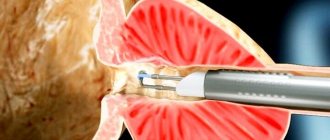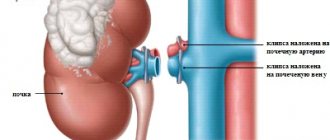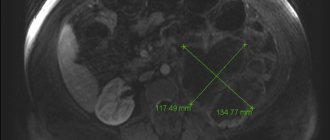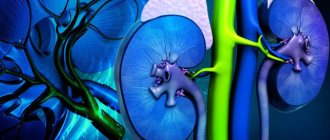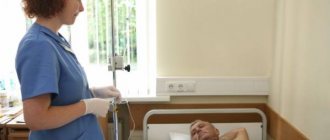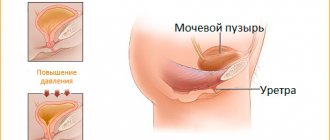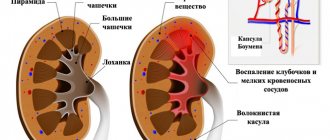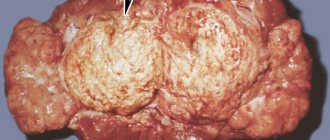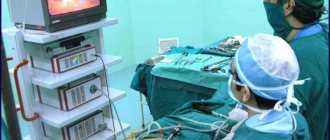The kidneys are a paired organ that performs a filtration function in the human body. Every day, up to 2000 liters of blood rush into them, which needs to get rid of waste, salts, and toxins. Nephrons, the functional units of the kidneys, are responsible for cleansing. Their number ranges from 800 thousand to 1.3 million. Considering the load that organs bear, it is difficult to imagine how one can survive without one kidney? In practice, there are many such cases. People who have lost an organ due to illness or were born with such a feature are no different from others and can lead a full life, observing some restrictions in diet and exercise.
Do I need to change my diet after a nephrectomy?
Nutrition after kidney removal usually does not require major adjustments. Basic principles of diet after kidney removal:
Which doctor checks your kidneys?
- Alcohol and drinks containing caffeine should be avoided;
- You need to introduce more complex and simple carbohydrates into your diet, for example, rye bread and apples;
- you cannot eat rich broths and meat gravies;
- It is recommended to replace animal protein with milk protein;
- You cannot consume table salt in unlimited quantities;
- meals should be fractional, it is better to eat at least 4 times a day;
- It is advisable to reduce the daily amount of fluid to 1 liter in order to avoid additional stress on the only kidney;
- the menu should be diversified with cereals, vegetables and fruits;
- It is recommended to avoid consuming store-bought juices, carbonated and energy drinks (it is best to drink weak tea, berry fruit drinks and clean water);
- dairy products must contain a low percentage of fat or be low-fat;
- It is better to exclude sweets, smoked foods and products that have a long shelf life from the menu.
A diet after kidney removal involves limiting protein products, since the breakdown of this organic compound results in the formation of toxins, which the kidneys are responsible for removing.
If one of the consequences of nephrectomy is an increase in blood pressure, the daily amount of sodium should be reduced to 2 g
The patient's diet should not be low-calorie or meager. It is best to serve boiled, stewed or steamed dishes at the table.
What sports activities do you prefer?
Those who were born with only one kidney at birth or as a result of surgery can engage in physical exercise. Please note that the athlete must eat in a special way. What to do in this case? For example, bodybuilding, in addition to training, requires a high protein content in the diet, which is undesirable for those who, being sick, will try to build muscle mass. It is believed that you should avoid activities where there is a high probability of injury: football, basketball, boxing. Due to the injury to the only kidney, there is a risk of living the rest of your life on dialysis and dying early.
However, recently doctors are not so categorical, because severe injuries to the organ are quite rare. Therefore, children and young people who were born without a kidney can begin classes without fear. How long they will last - see how you feel. Exercising will not affect your health. If you, as a parent, are concerned, let your child be content with the pool several times a week. This activity improves health and improves immunity. Lifestyle improves its quality.
Why are regular checkups important?
The condition of the body that is observed in the patient after nephrectomy determines whether it is possible to live with one kidney. The health of the remaining bean-shaped organ must be monitored especially carefully. Having lost the only functioning kidney, a person will not be able to live further.
After a complex operation, changes begin to occur in the body, which over time can result in serious pathologies. Among them are:
- Proteinuria. Protein present in urine indicates kidney disease. In people who have undergone nephrectomy, analysis often shows the presence of protein in the urine;
- Increase in blood pressure. One of the functions of the bean-shaped organ is to maintain blood pressure at the proper level. Normalization of blood pressure occurs due to the regulation of circulating blood volume, as well as the production of the hormone renin, which, together with other hormones, has a constricting and dilating effect on blood vessels. The loss of one kidney may be accompanied by a violation of these functions, resulting in arterial hypertension;
- Decreased glomerular filtration rate. Its indicator determines the efficiency of removing end-metabolic products from the blood. Each bean-shaped organ consists of approximately 1 million nephrons, which are riddled with blood vessels and tubes that collect urine. After the removal of one paired organ, the glomerular filtration rate inevitably drops.
Is it possible to live fully without one kidney?
Most people who are born with one organ instead of two sometimes find out about it in adulthood after an ultrasound examination, because they do not feel any discomfort. This occurs due to the launch of compensatory mechanisms. One kidney begins to almost double in size due to an increase in the number of cells or their size. The same mechanisms are launched after the removal or transplantation of an organ, but at least 1.5 years must pass before the body fully adapts.
What studies will tell us about the condition of the kidneys?
Special test strips are used to detect protein in urine. A change in their color when interacting with urine indicates the presence or absence of this organic compound in the urine.
To diagnose kidney disease, a test showing the ratio of creatinine (the end product of metabolism) to protein is also necessary. The level of creatinine in urine is the most important indicator of the functional capacity of the bean-shaped organ. An increase in the ratio of albumin to 1 g of creatinine means that protein that should remain in the blood is lost. The end product of the creatine phosphate reaction also indicates the glomerular filtration rate. If it does not exceed 60, the patient has chronic renal pathology.
Ultrasound examination will also tell you about the presence or absence of structural changes in the bean-shaped organ. In interpreting ultrasound results, both homogeneous formations and heterogeneous contents may be encountered. For example, a malignant process is characterized by a heterogeneous structure and the presence of areas with reduced and increased echo density. Thus, a malignant tumor is heterogeneous. If the ultrasound transcripts include other terms, we may be talking about a renal cyst or lipoma. An accurate diagnosis can only be made by a specialist with good equipment and high qualifications.
What are the consequences of deletion?
There are almost no complications immediately after surgery. Some people experience suppuration of sutures due to improper wound care. In rare cases, internal bleeding occurs.
If medical recommendations are not followed, thrombosis of arteries or veins is possible. The rupture of a blood clot can cause life-threatening conditions:
- stroke;
- pulmonary embolism;
- heart attack
With prolonged immobility after surgery, congestive pneumonia may develop.
Early complications are rare. Long-term consequences of nephrectomy usually develop:
- arterial hypertension;
- decreased glomerular filtration rate;
- excretion of protein in the urine;
- renal failure;
- adhesions in the surgical area.
Paying close attention to your health will help reduce the risk of late complications. There is no need to postpone a visit to the doctor when urination is disrupted or the appearance of urine changes.
In what cases is a doctor needed?
After the patient is discharged from the hospital, the rehabilitation process takes place at home. If the following undesirable manifestations occur, an urgent examination by a doctor is necessary:
- bleeding and discharge from the operated area;
- swelling, redness and increasing pain;
- causeless weakness;
- difficulty urinating;
- nausea or vomiting;
- general signs of infection, fever or chills;
- shortness of breath and chest pain.
Some people prefer herbal medicine to medication. Patients who have undergone nephrectomy should understand that no folk remedy can bring back a lost organ. Self-medication with herbal remedies can negatively affect not only the remaining kidney, but also the general condition of the body. Any actions must be coordinated with your doctor.
To prevent possible complications, you should avoid hypothermia and promptly eliminate foci of acute and chronic inflammation (for example, tonsillitis, sore throat, caries)
Hemodialysis
With chronic renal failure, or failure of both organs, you can live under hemodialysis, a procedure that cleanses the blood. This is done using a special device called an “artificial kidney.” It is a semi-permeable porous membrane.
The device actually replaces the lost organ. It performs the following functions:
- normalizes electrolyte balance;
- removes urea and toxins;
- eliminates excess fluid;
- prevents the formation of blood clots;
- restores acid-base balance;
- normalizes blood pressure.
Hemodialysis can be done in a hospital, outpatient clinic, or even at home, if you have the opportunity to purchase an expensive drug and take a training course. You will have to refuse the procedure if you have tuberculosis, mental problems, infections, blood diseases or malignant arterial hypertension.
DETAILS: Treatment of kidney failure with folk remedies
If it is necessary to choose a replacement for hemodialysis, an alternative method of blood purification is proposed - peritoneal dialysis. This is an extrarenal blood purification. During the process, a hole is made in the abdominal cavity through which a catheter is inserted. Dialysate is poured several times a day and left for 4-6 hours. After this time, the fluid is replaced.
Through numerous capillaries of the peritoneum (it plays the role of a natural membrane), excess fluid, urea and toxins pass into the dialysate, and the blood becomes cleaner. The load on the heart is insignificant, since the process occurs slowly. The patient’s main task is to maintain sterility to avoid infection.
Pregnancy after nephrectomy
Today, many women cannot experience the happiness of motherhood, because there are restrictions that prevent them from bearing a healthy baby.
The absence of one bean-shaped organ is not a direct contraindication to pregnancy. When planning childbearing, the expectant mother who has undergone nephrectomy must undergo a comprehensive diagnosis of the body. If the only kidney functions fully and there are no pathologies associated with the removal of the organ, a woman can carry and give birth to a fully developed child without any problems.
Some people are missing one bean-shaped organ from birth. Often the pathological condition is not accompanied by symptoms, so a person may not suspect the presence of a congenital anomaly for a long time
Pregnancy and childbirth
Until recently, it was believed that giving birth to a woman with such a diagnosis was contraindicated. But times change, new technologies develop, so it becomes possible to give birth with such a diagnosis.
Today, during pregnancy and childbirth, one kidney is not a problem, and the baby, as a rule, is born healthy and without abnormalities. But if there is a similar problem, the doctor pays special attention and special care to the woman in labor. After all, such women are much more susceptible to infections, diseases, etc. than others. A special diet, physical activity and additional tests are prescribed in order to quickly restore the body during and after childbirth.
The only contraindication is organ removal due to a tumor.
Answers to important questions
“Do they take you into the army after having a kidney removed?” – a pressing question for men who have experienced the loss of a vital organ. If the urinary function after nephrectomy is not impaired and there are no concomitant severe pathologies, the young man is considered liable for military service. In addition, in the absence of chronic renal failure, a person is not entitled to disability.
If the condition of the patient who has undergone surgery does not cause concern, approximately 10 days after the removal of the kidney, he can return to work, of course, if it is not associated with heavy physical activity.
It is not recommended to resume sexual activity for a month after surgery
People who have had a paired organ removed can live a full life and even play sports, with the exception of the first three months after nephrectomy. However, it should be remembered that contact sports, such as football, hockey or martial arts, can pose a serious danger to a person left with one kidney. If the bean-shaped organ is ruptured or severely injured, the patient’s life cannot be saved.
Necessary diet
A person with one kidney can have a full life, but some restrictions must be observed. After the loss of an organ, the patient expects rehabilitation, which will last about a year.
The remaining kidney needs time for compensatory hypertrophy. Properly selected therapeutic nutrition will help facilitate the process of restructuring the body. It is advisable that the diet be developed by the attending physician, taking into account the individual characteristics of the patient’s body.
An ordinary person is recommended to drink 2-3 liters of clean water per day, but people with one kidney live by different rules. Their daily intake is reduced to one liter. It will be difficult for the organ to cope with a large amount of fluid, especially in the first time after resection.
If possible, it is advisable to completely avoid any spices and minimize the amount of salt consumed. The maximum daily intake is no more than 5 grams, and salt should be added to prepared dishes. Another task for the patient is to reduce the amount of protein food.
The diet should consist of food that is easily digested. Preservatives and dyes are prohibited. It is allowed to include lean meat or fish in the menu, up to 100 grams per day. The main “bet” is on fruits and vegetables - they will help the body get enough vitamins and minerals to support metabolic processes.
After surgery, problems with stool may occur. To avoid constipation, it is recommended to consume:
- prunes;
- dried apricots;
- baked apples.
Dairy products contain a lot of calcium, which poses some danger for a person who has one kidney. The remains of this substance can be deposited in the organ in the form of sand. To avoid this, milk, kefir, sour cream and fermented baked milk are consumed no more than 1-2 times a week.
Diet after removal of a kidney with a tumor in the first days after surgery
For the first few days after any major surgery, you should stay in bed whenever possible, unless otherwise prescribed by your doctor. Often after operations on internal organs, nutrition is provided through IVs. Through them, the body obtains all the necessary substances to maintain strength and energy. If the patient's condition improves, it is allowed to gradually introduce nutrition in the traditional way. Meals should consist of liquid food with a volume of no more than 1 liter (liquid crushed cereals and soups).
Particular attention is paid to issues of salt and water consumption. Insufficient fluid supply to tissues and cells leads to dehydration and deterioration in the functioning of all systems. Exceeding the norm of drinking water will cause excessive stress on the organ. It is even possible that the second kidney may fail. For one month, the patient is recommended to consume no more than a teaspoon of salt per day. This is about 3-5 grams. The daily amount of food should be divided into 5-6 small meals. Food for the patient must be crushed or pureed. Nutrition and drinking regimen are followed in this way for one month.
Food should be as pureed as possible
After nephrectomy, the second organ takes on the entire load and begins to adapt to working alone. The recovery period for a person after surgery ranges from 15 days to one month. During this period, it is necessary to be attentive to all sensations that arise in the body, especially uncomfortable and unpleasant ones. In addition to proper nutrition, you should also avoid heavy physical labor, otherwise complications will inevitably appear.
Complete restoration of all functions and normalization of the body’s functioning is observed within a year or a year and a half. During rehabilitation, compensatory growth of the second organ occurs, which can become the size of two full-fledged kidneys. This helps him do the work of two.
Congenital developmental anomalies: what to do if a person was born with one “working” kidney
Agenesis (another name is aplasia) is a congenital malformation that is accompanied by impaired embryogenesis and complete underdevelopment of one of the kidneys. The frequency of occurrence of the pathology does not exceed 0.05%; in men it is diagnosed three times more often than in women.
A healthy organ immediately begins to work “for two.” In order to meet the body's needs, it begins to slowly increase in size: there are more functioning nephrons, and they quickly filter the volume of blood entering them.
Sometimes the size of a single kidney becomes twice as large as a normal one. In medicine, such an increase is usually called compensatory, or restorative.
A little about the procedure itself
Kidney nephrectomy is an operation to remove the affected organ. It is removed through a small incision in the skin or using laparoscopy. The first method provides good access to the kidney and neighboring organs, but leaves a painful suture and increases the rehabilitation period.
After laparoscopy, a small suture remains on the patient’s body, the diameter of which does not exceed 2 cm. The risk of bleeding and injury to internal organs is reduced, so recovery is much faster and painless.
Both types of surgery are performed under general anesthesia. The patient is placed on his side and secured on the operating table with elastic bandages.
Why can people only have one kidney?
There are three main reasons:
- A person has only one kidney from birth. In the world of medicine, this trend is considered under the definition of renal agenesis. There is also the concept of kidney dysplasia, when a born child has 2 kidneys, but only one of them is fully functioning. Most people born with this problem are able to lead a full and healthy life, even though they are considered disabled.
- One kidney was removed due to injury or serious illness after surgery (for example, cancer).
- Donation by a healthy person for the benefit and health of another who needs a transplant.
When you are born with one kidney or when you lose the second for some reason, the following happens: one kidney begins to develop and work more quickly, thereby becoming larger than usual. As a result, the organ reaches the size it should be with the sum of two kidneys.
The accelerated growth of one kidney allows it to do the same work as if there were two.
This forced growth of an organ is called “compensatory” or “restorative”. This action is carried out in several ways: the reason for rapid growth can be accelerated cell division or an increase in cell size.
For example, if an organ was removed after surgery, the cells of the other will grow at an accelerated pace. Eventually it grows to size two.
In other words, it will function as two. It has long been proven that the level of work of one kidney is in no way inferior to the work of two.
As a result of testing, it was revealed that the organ overcomes its functionality by 35-45% more than in its normal state.
There are congenital pathologies and acquired reasons why people have only one kidney. Congenital ones include:
- Renal agenesis is a congenital anomaly in which one of the kidneys is absent or cannot perform its functions due to underdevelopment.
- Dysplasia is a pathology in which one kidney is rudimentary (up to 3 cm), that is, underdeveloped and has dimensions unsuitable for normal functioning, or dwarf (up to 5 cm), consisting mainly of connective tissue and having an insufficient number of nephrons.
Acquired reasons:
- Damage in which restoration of functionality is impossible.
- Diseases requiring organ removal: malignant tumors; large benign formations; formation of large coral-shaped oxalates; inflammatory processes accompanied by the release of pus; advanced form of polycystic disease.
- Voluntary provision of a healthy organ by a donor to a recipient.
As a result, one kidney takes on all the functions that both organs would have to perform.
Limiting physical activity during the rehabilitation period
Regardless of which side the kidney was removed from (nephrectomy of the left kidney or the right), the recommendations for physical activity of the operated person are absolutely the same. In the first 60 days, the patient requires maximum rest.
To strengthen the body, it is recommended to take walks every day. In the first days, their duration should not exceed 30 minutes, but after a couple of weeks this time can be gradually increased.
Limits are also placed on lifting weights. During the first 3 months, you should not lift bags that weigh more than 3 kg.
To unload the remaining organ, it is useful to take bath procedures, but only if there are no other contraindications for their implementation. The frequency of trips to the bathhouse should not exceed 1 time in seven days.

